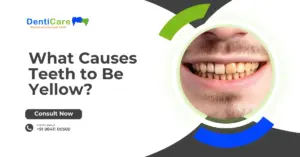Are you postponing your dental visit because of your anxiety? Do you hate when the dentist puts instruments in your mouth and it causes you to gag? no more fear , let’s see what is laughing gas and how its going to solve your dental phobia problem.
Discovery of Nitrous Oxide
Early 19th century, patients who undergo lengthy surgical procedures were succumbed to exhaustion and unbearable pain . Pain control was desperately needed . Patients had to choose between pure torture and unfathomable pain or live with the disease which would result in slow and agonizing death. Nitrous oxide was first discovered in 1772-1774 but was not used widely. The use of nitrous oxide and its results were first published in 1800. Nitrous oxide was first used for tooth extraction in 1845 in America.
What is Nitrous Oxide? (Laughing Gas)
Nitrous oxide is also known as laughing gas (but it does not necessarily make you laugh). It is done by using mixture of two gases, nitrous oxide and oxygen. It is very safe and efficient for alleviating pain and dental anxiety. It is one among the fastest gases to cause sedation and the effects of sedation wears out pretty immediately.
What is the procedure ?
Your doctor will place a mask on your nose and ask you to take a deep breathe. First oxygen will be released and then slowly nitrous oxide will be mixed along with the oxygen. You will feel the effects of the sedation in a few minutes. You feel lighter and more relaxed.You’ll be calm and comfortable throughout the session. In this state you will be able to respond to verbal commands and you are in a stage in before sleep.
Is it safe ?
Since the discovery of its medical potential 175 years ago, it has a remarkable safety record for patients undergoing surgical procedures. There are several safety margins present to ensure the controlled release of the required amount. This is for both the dentist and the patient’s assurance of safe delivery of the gases. This modern equipment has fail safe mechanism of O2 which makes sure N2O is released only when O2 is present.
What are the other specialties that uses Nitrous oxide ? Besides its use in healthcare it is used by different industries in various others forms like food processing, semiconductor manufacturing, auto-racing and analy
What are the other specialties that uses Nitrous oxide
Besides its use in surgical dental care and Paediatric dentistry it is widely used used by other fields of medicine.
Who can undergo N2O sedation ?
Nitrous oxide contraindications are patients who can’t use nasal mask, or have undergone ear surgery, psychological disorders, pregnant patients, respiratory conditions.
Pre and Post operative instructions
Before the procedure, we will advise you to follow few fasting protocol (NPO). This is to make sure you don’t feel nauseous during or after the procedure.
You can leave 5-10 mins after the procedure is completed. Most patients don’t have any adverse effects after sedation. Some patients can experience mild headache or nausea which eventually settle down .
At Denticare Dental Clinic, we have the latest nitrous oxide delivery machines and follow the latest guidelines and protocols. So you can undergo dental procedures under nitrous sedation comfortably. Book your appointments without fear and request for nitrous oxide conscious sedation to overcome your anxiety.




